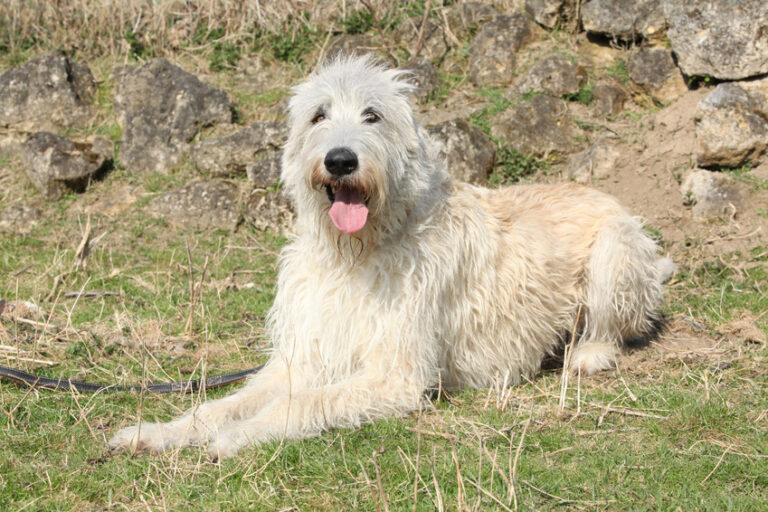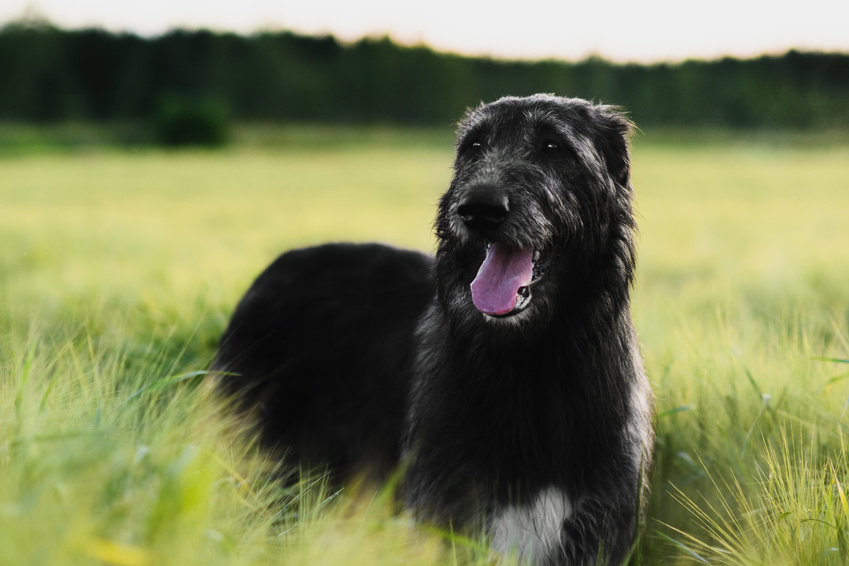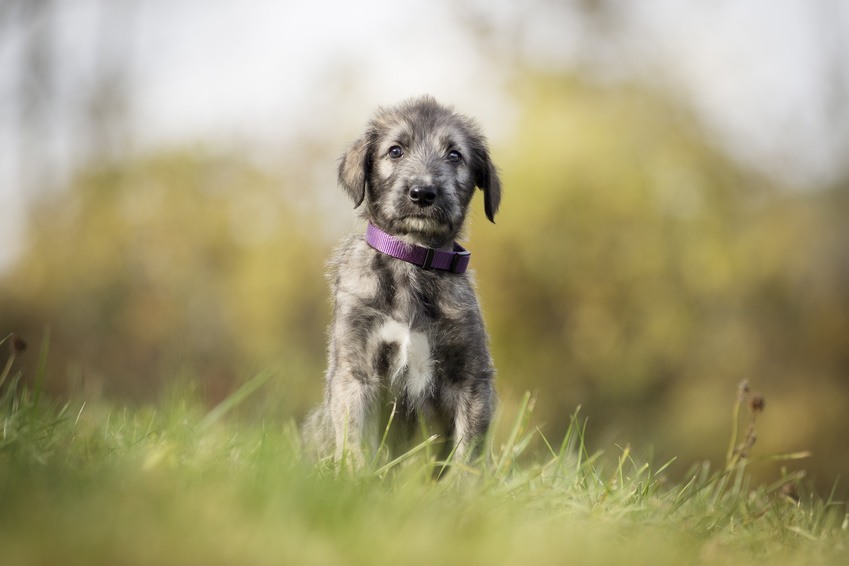What differentiates healthy food from that of lower quality? Is dry food better than wet food, is BARFing better than cooking? Opinions on the right way to feed dogs are as varied as the pet food aisles in supermarkets. What matters less is the type of diet, but rather what the dog food contains and what it should not. Like all dogs, Wolfhounds primarily need meat, supplemented with vegetables, rice, potatoes or pasta. However, finished dog food often contains a disproportionately high amount of grain, as well as useless ingredients like sugar, soya or flavour enhancers. Always look for good ingredients in the food, such as plenty of good meat, vegetables and only a small amount of grain – whether you cook yourself or choose ready-made food.
Discover our selection of dry dog food or wet dog food!
How much does an Irish Wolfhound eat?
A dog as large as an Irish Wolfhound naturally eats more than a small Dachshund. However, the better quality its food is, the less it needs. In other words: quality over quantity. Good food meets the dog’s nutrient requirements optimally. This depends less on the dog breed than on individual factors like age, weight, size and activity level. A very sporty Wolfhound will need more energy than one that is mainly a family dog with minimal exercise. Likewise, a puppy needs a different food composition than an adult dog. Given that Wolfhounds grow very quickly, their growth should not be accelerated by excessive energy intake. Rapid growth in the first few months can lead to painful joint problems (e.g. HD). An incorrect calcium-phosphorus ratio in the food can also negatively affect the young dog’s bone growth.
Besides the right food composition, you can further support your Wolfhound’s health by avoiding stairs or other sudden movements during the growth phase that could strain the dog, potentially leading to joint and bone issues later. Since Wolfhounds, like many large dogs, are prone to the dangerous gastric torsion, ensure sufficient rest periods after meals. Distributing daily food intake into approximately two to three (smaller) meals is also advisable. Height-adjustable feeding bowls are also beneficial, accommodating the breed’s rapid growth and preventing the dog from bending too low and adopting an unfavourable posture while eating.


